Hydrogen year zero starts
A look at the different technologies built into Feadship’s Project 821 and Sanlorenzo’s Almax, both powered by hydrogen while using distinct approaches…
Who said that the new year starts in January? For the yachting industry, the real New Year, or should we say Year Zero, began in May with the launch of two of the most advanced yachts in terms of sustainable and environmentally friendly engines.
The first ‘game changer’ vessel was launched on 4 May in Amsterdam: the 119-metre Feadship Project 821, which can be considered the world’s first hydrogen-fuel-cell superyacht. This zero-diesel yacht, to be delivered at the end of this year, is designed to sail between ports or anchorages and run the yacht’s hotel cargo and services on the zero-emission energy of green hydrogen.
The second yacht to change the rules of traditional yachting is the Sanlorenzo 50 Steel Almax, a 50-metre yacht built for Chairman and CEO of Sanlorenzo Group Massimo Perotti. It was launched on 18 May, with delivery scheduled for July 2024. This yacht will be equipped with a green methanol reformer fuel cell system capable of powering the yacht’s hotel systems with zero emissions, without storing hydrogen on board.
The keywords for both projects are methanol, fuel cell, hydrogen, electricity and water vapour. When hydrogen is processed in a fuel cell, the only by-products are electricity and water in the form of steam. Both projects are designed, at least as an initial step, to create enough electricity to power hotel systems.
According to the Yacht Environmental Transparency Index (YETI), 70 to 78 per cent of a yacht’s total energy consumption per year is used to power the hotel load, with heating and air conditioning representing the greatest demands. The supply of electricity via non-polluting hydrogen fuel cells has a rapid and significant impact. It is for this reason that both the Feadship and Sanlorenzo projects have started, for now, to create power for the hotel load.
According to Feadship, its research and development team has been exploring hydrogen, along with other fossil-free fuel options, as part of the company’s commitment to develop ‘net zero’ yachts by 2030.
Hydrogen fuel cells, which offer a combustion-free method of generating electricity, produce only pure water as their by-product. While hydrogen-fuel-cell-powered cars exist, and fuel cells have served as the primary source of electricity in human space flight for more than 60 years, the maritime sector previously lacked such technology. There were no regulations governing hydrogen storage and fuel cell systems at the Class, Flag state or even IMO level. To address this gap, Feadship, Edmiston and Lloyd’s Register collaborated to develop equipment, protocols and safety regulations tailored to the maritime industry.
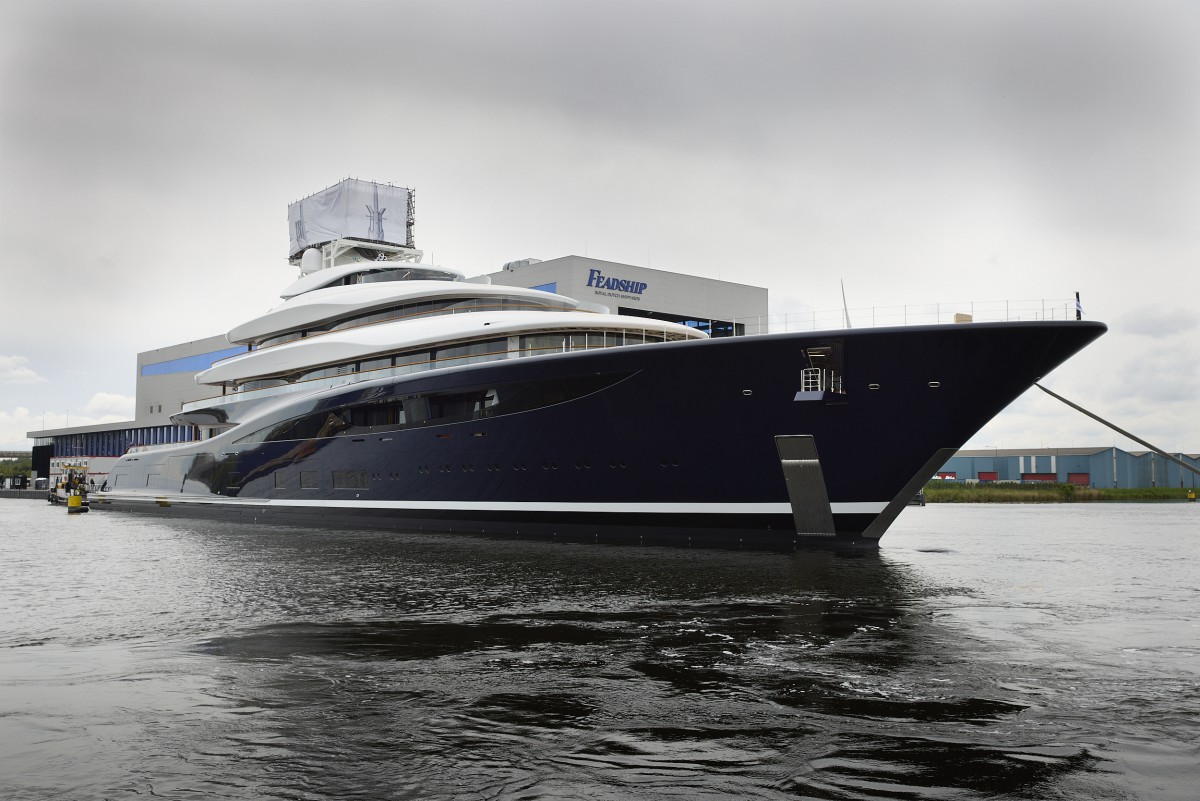
Project 821 Image © Feadship
“The value of the research as well the development of Class and Flag safety regulations for an entirely new type of energy generation is an advancement we are proud to have made available to all,” says Jan-Bart Verkuyl, CEO of Feadship’s Royal Van Lent shipyard. Next year, for example, two long-route Norwegian passenger and car ferries will enter into service utilising the system pioneered with PowerCell Group for Project 821.
From the outset, a significant challenge lay in devising a practical method to store compressed liquid hydrogen below deck at -253°C on a luxury yacht. Yet, investing in this technology is imperative to shift away from fossil fuels, with hydrogen emerging as one of the most efficient and clean options available.
Overall, the cryogenic fuel tank housing 92m3 (approximately four tonnes) of hydrogen on Project 821, along with the 16 compact fuel cells, their connection to the DC electrical grid via a switchboard, and the vent stacks for releasing water vapour, extended the yacht’s original length specification by four metres. Notably, the fuel cells engineered for Project 821 can also utilise methanol, a liquid fuel easier to store under ambient conditions. Methanol undergoes steam reforming to produce hydrogen before undergoing the electrochemical reaction within the fuel cell.
Even for a yacht the size of Project 821, carrying sufficient liquid hydrogen to power a transoceanic crossing is unfeasible. However, Feadship can significantly reduce a yacht’s carbon footprint where it matters most: by generating electricity to meet the hotel load.
While large battery banks are increasingly employed to provide ample power for generator-free operation during quiet nights at anchor or when cruising through environmentally sensitive marine preserve areas, Project 821 stores a modest 543kW hours of energy. To put this in perspective, Feadship’s initial diesel-electric hybrid, 83.5-metre Savannah launched in 2015, stored one megawatt of electrical energy. Nevertheless, Project 821 doesn’t require such capacity. Its fuel cell technology enables an entire week of silent operation at anchor or emission-free navigation at 10 knots, whether departing marinas or cruising protected marine zones.
In Sanlorenzo’s Almax project, the 50 Steel is the world’s first superyacht to incorporate the modular reformer-fuel cell system. Developed in collaboration with Siemens Energy, this system can convert green methanol into hydrogen and then into electricity to power all of the yacht’s hotel systems, without the need to store hydrogen on board. This enables the vessel to generate electricity of up to 100kW, with the propulsion engines and diesel generators switched off. Completely zero-emission, this system significantly extends the time spent at anchor without consuming diesel fuel, covering approximately 90 per cent of the typical usage time of a zero-emission superyacht.
An exclusive agreement signed in 2021 with Siemens Energy means Sanlorenzo is set to become the first shipyard to deliver a superyacht equipped with Reformer Fuel Cell systems. These systems utilise hydrogen derived from green methanol to generate electricity. This technology, showcased in the 50 Steel model, enables the production of up to 100kW without the need for propulsion engines or diesel generators.
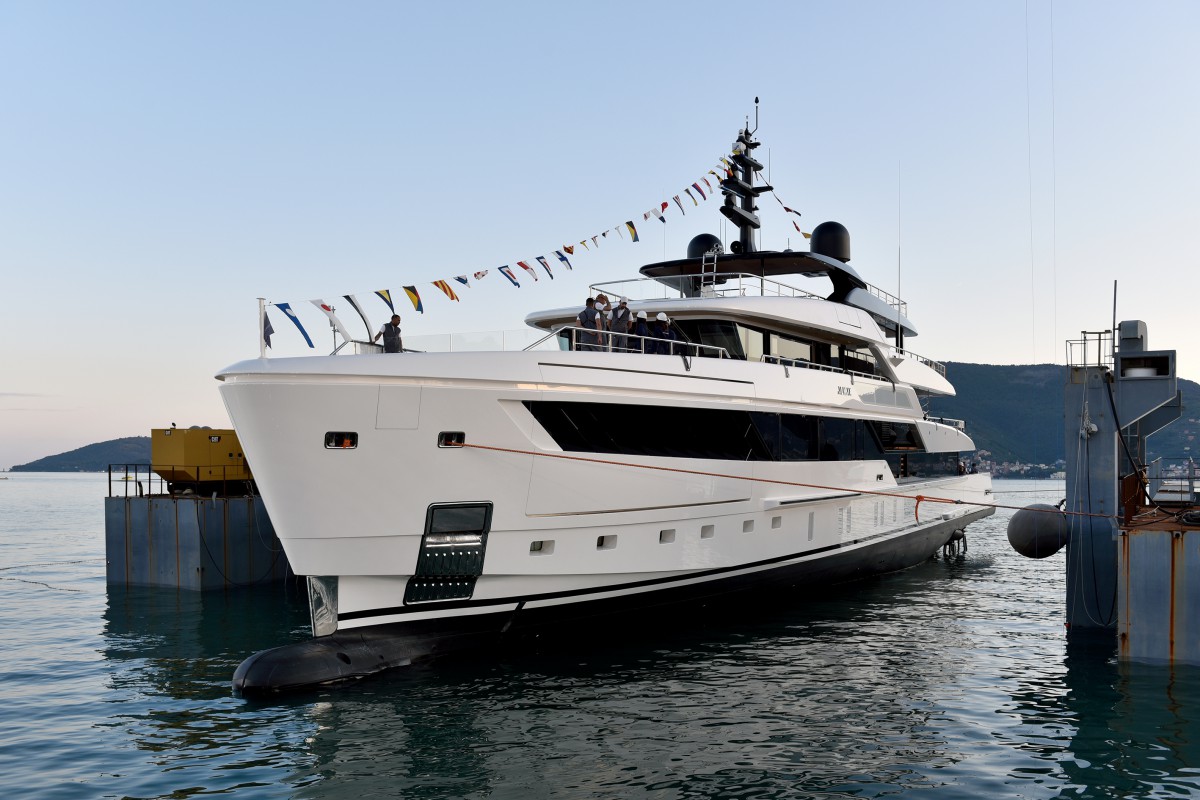
Almax
During this initial phase, Sanlorenzo’s focus has been primarily on reducing emissions while at anchor rather than during navigation. Through data analysis of real-world usage, it was determined that the boat is stationary for approximately 90 per cent of the time spent on board, with navigation accounting for only the remaining 10 per cent. The implementation of this system allows for an annual reduction in emissions of 20 to 30 per cent, aligning with the latest IMO strategies that call for a 20 per cent reduction by 2030.
The important aspect of this project is that the energy produced by the fuel cells is not stored but used immediately. The system comprises 20 modules, each capable of generating 5kW, resulting in a total output of 100kW. Consequently, the system eliminates the need for the simultaneous use of diesel generators. In instances of peak energy demand, lithium batteries with an estimated capacity of around 600kW/h will be utilised.
In essence, the fuel cell system undergoes two key processes: the conversion of distilled water and methanol into hydrogen, followed by the transformation of hydrogen into electrical energy.
According to Sanlorenzo, methanol ranks among the most efficient alternatives to diesel fuel, as it is readily available in over 100 ports worldwide. Sanlorenzo’s decision revolves around the utilisation of green methanol, which is exclusively produced using renewable energy sources and carbon dioxide captured from the atmosphere through carbon capture systems. This approach ensures that the amount of CO2 released into the atmosphere during combustion equals the quantity removed during the production of green methanol, establishing a circular and entirely carbon-neutral system. Consequently, green methanol emerges as a viable substitute for more environmentally harmful substances such as ammonia, diesel or liquefied natural gas.
50 Steel's fuel cell reformer system enables the indirect loading of methanol instead of hydrogen (stored in a 5,000-litre tank). This approach allows for the storage of the same energy on board within a significantly smaller space, thereby mitigating the constraints associated with the storage and retrieval of pure hydrogen.
Without a doubt, the primary distinction between the two technologies resides in the on-board storage of materials for generating electricity from hydrogen. Feadship, considering the vessel’s size, chose to store liquid hydrogen below deck at -253 degrees Celsius, whereas Sanlorenzo opted for methanol storage. When combined with water, methanol produces hydrogen.
At the press conference on the day of Almax’s launch, Perotti said: “Hydrogen refuelling poses challenges because current EU regulations prohibit bunkering in ports; it must be done offshore. As far as I know, the Feadship yacht utilises hydrogen to power its hotel amenities alongside a limited-range hybrid propulsion system. This mirrors the functionality of the 50 Steel, albeit with green methanol – a distinct approach from the Dutch counterpart, offering added safety benefits by presenting risks equivalent to those of traditional fuels, practically zero. Additionally, methanol poses no obstacles for bunkering in port or transportation. Moreover, engine manufacturers such as MAN, MTU and Caterpillar are actively developing bi-fuel mechanisms capable of running on both methanol and diesel.”
Profile links
NEW: Sign up for SuperyachtNewsweek!
Get the latest weekly news, in-depth reports, intelligence, and strategic insights, delivered directly from The Superyacht Group's editors and market analysts.
Stay at the forefront of the superyacht industry with SuperyachtNewsweek
Click here to become part of The Superyacht Group community, and join us in our mission to make this industry accessible to all, and prosperous for the long-term. We are offering access to the superyacht industry’s most comprehensive and longstanding archive of business-critical information, as well as a comprehensive, real-time superyacht fleet database, for just £10 per month, because we are One Industry with One Mission. Sign up here.
Related news
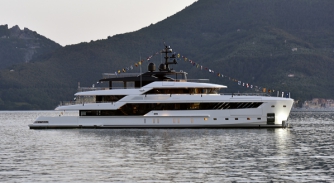
Sanlorenzo launches its first methanol-powered yacht
The highly anticipated 50Steel has hit the water ahead of its delivery in July, featuring new methanol fuel technology and a reimagined engine room layout
Fleet
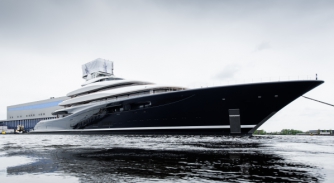
Feadship launches hydrogen fuelled superyacht
It might be the largest motoryacht to be launched in The Netherlands, but Project 821 is grabbing the headlines due to its technological breakthrough
Fleet

Feadship’s first hybrid electric readies for sea trials
Project 1012 has finally exited the construction shed at the Dutch shipyard’s facility in Makkum ahead of its final fittings prior to delivery
Fleet

YETI: Five Years On
Feadship reflects on five years of Water Revolution Foundation’s transformative Yacht Environmental Transparency Index tool
Technology
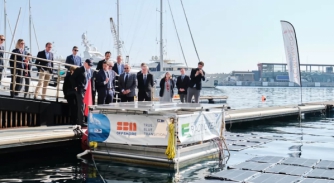
Green hydrogen arrives in Monaco
Yacht Club de Monaco and SBM Offshore have launched a platform to provide green hydrogen in Monte Carlo part of a ‘responsible yachting’ initia
Crew
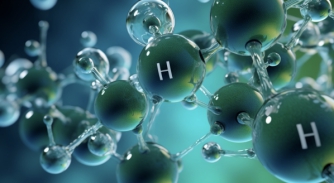
Lürssen secures EU funding for hydrogen vessel
The shipyard’s Croatian engineering firm is aiming to develop a multi-million-euro sustainable, climate-neutral fuel system
Crew
Related news
Feadship launches hydrogen fuelled superyacht
2 years ago
YETI: Five Years On
2 years ago
Green hydrogen arrives in Monaco
2 years ago
Lürssen secures EU funding for hydrogen vessel
2 years ago
NEW: Sign up for
SuperyachtNewsweek!
Get the latest weekly news, in-depth reports, intelligence, and strategic insights, delivered directly from The Superyacht Group's editors and market analysts.
Stay at the forefront of the superyacht industry with SuperyachtNewsweek



